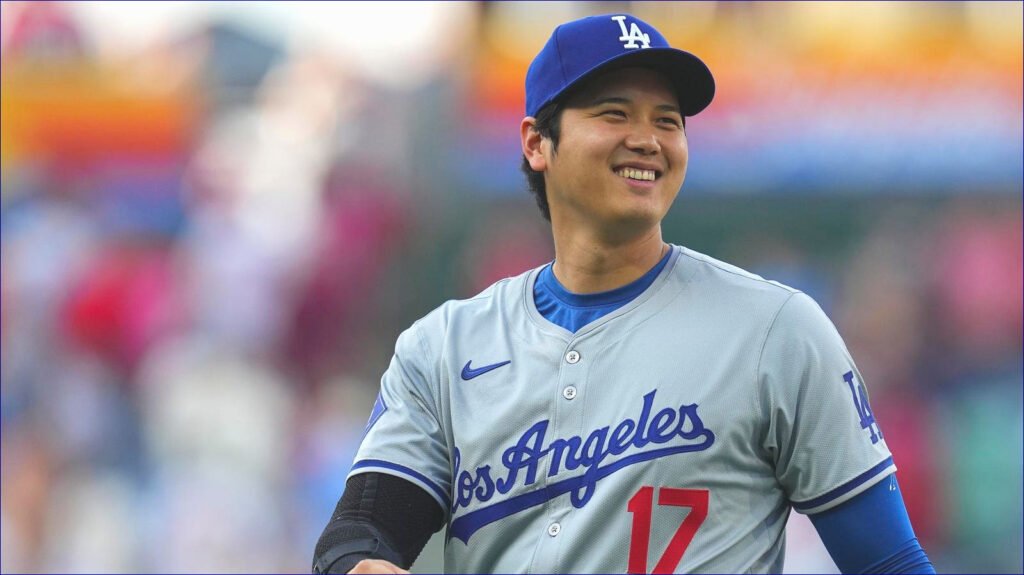Unprecedented Impact: Shohei Ohtani’s Financial Legacy with the Dodgers
Amid the roaring din of the baseball season, one figure shines brighter than the rest—Shohei Ohtani. As his inaugural year unfolds in that jaw-dropping 10-year, $700 million deal with the Los Angeles Dodgers, the dual-threat superstar—lauded as the National League MVP and World Series champion—displays tremendous value both on and off the diamond.
In the sweeping scope of 2024, the Dodgers unleashed a parade of 12 new partnerships rooted in Japan, amassing an astounding $70 million in additional sponsorship revenue, thanks to Ohtani’s magnetic presence. Insights from the research powerhouse SponsorUnited reveal a ripple effect, extending far beyond the Dodgers, enriching the entire tapestry of Major League Baseball.
“Turn your gaze to any backstop during an away game, and you’ll witness a constellation of Japanese brands lighting up the field, regardless of the venue—be it the Orioles, Yankees, or any team the Dodgers face,” states Bob Lynch, the astute CEO of SponsorUnited. Remarkably, about $15 million surged into the coffers of teams hosting the Dodgers, thanks to Japanese corporations eager to bask in Ohtani’s limelight by securing advertising deals for games featuring the baseball icon.
The emergence of the “Ohtani effect,” paired with fresh assets like jersey patches and helmet logos, propelled baseball’s sponsorship landscape into new heights, gathering nearly $300 million in fresh business during 2024. The grand total reached a monumental $1.84 billion across the league—a robust 16% increase compared to the previous year and a staggering 36% boost over the past three seasons. Among North America’s premier sports leagues, only the NFL surpasses MLB, boasting an estimated $2.3 billion in sponsorship revenue during the 2023s season, while no league exhibits growth at such a rapid pace.
Even as the NFL, NBA, NHL, and MLS reflected double-digit surges during this three-year span, it signals an enthusiastic tableau for the industry moving forward. The NHL, with its cutting-edge “digitally enhanced dasherboards” that allow advertisements to be dynamically swapped, closely trails MLB with a 32% rise in sponsorship revenue, ultimately reaching $1.35 billion.
In the grand narrative of North American sports, the collective five leagues amassed a groundbreaking $7.66 billion in sponsorship revenue—an impressive 12% boost year-over-year across nearly 14,000 deals. The abundance of capital is illustrated by nearly 200 brands investing upwards of a million dollars in fresh sponsorship ventures last year. The NFL leads with an average deal estimated at $760,000, while each league clocks in above the $300,000 mark.
This surge not only reflects growing enthusiasm for major professional sports but also illustrates the creativity of teams and leagues in attracting partners. Traditional luxury suites are giving way to a varied spectrum of premium seating options, each bearing a sponsor’s emblem. Concurrently, brands are no longer shackled by the rigid exclusivity deals of yesteryear—current averages reveal major teams hosting around 10 alcohol sponsorships.
“The ambition for these brands revolves around reaching engaged and captive audiences with greater efficacy,” observes Tim Derdenger, an astute associate professor at Carnegie Mellon’s Tepper School of Business. “Harnessing technology to tailor messages for consumers will be paramount to sponsor growth across leagues.”
The urgency to amplify sponsorships is particularly salient for MLB and NHL, both of which lack the robust national media contracts enjoyed by titans like the NFL and NBA. Given hardships faced by regional sports networks like Diamond Sports Group (now Main Street Sports Group), teams are recalibrating, relying on sponsorship and advertising to stabilize revenue streams. As per estimates, team-centric advertising and sponsorship constituted 8.9% of NHL revenues and 8.1% for MLB, in contrast to 7.6% for the NBA and 7.4% for the NFL.
“In the case of MLB, I anticipate growth won’t adhere to a linear trajectory,” Lynch cautions. “We’re witnessing a two-year plan focused on selling jersey patches and on-field signage, a striking innovation that didn’t exist previously.” Yet, he remains buoyant about the prospects ahead. Challenger brands like Logan Paul’s Prime Hydration inject excitement, pushing incumbent brands to adapt aggressively, reminiscent of Verizon’s bold 30-city Super Bowl FanFest initiative. Moreover, international markets brim with potential, underscored by initiatives such as the NFL’s International Series, further diversifying revenue.
As new ownership groups rise and institutional investors engage, strategies are shifting. “With private equity inflating valuations, it’s become imperative to scrutinize every facet of the business and uncover avenues for enhanced efficiency,” Lynch asserts. “Sponsorships offer a unique advantage, often unbound by wins and losses. They tend to be longer-term agreements, ensuring continued revenue even in less successful seasons.”
The ties between sports and corporate investment are transforming, led by visionaries eager to harness the giant potential of sponsorship in an ever-evolving landscape.

